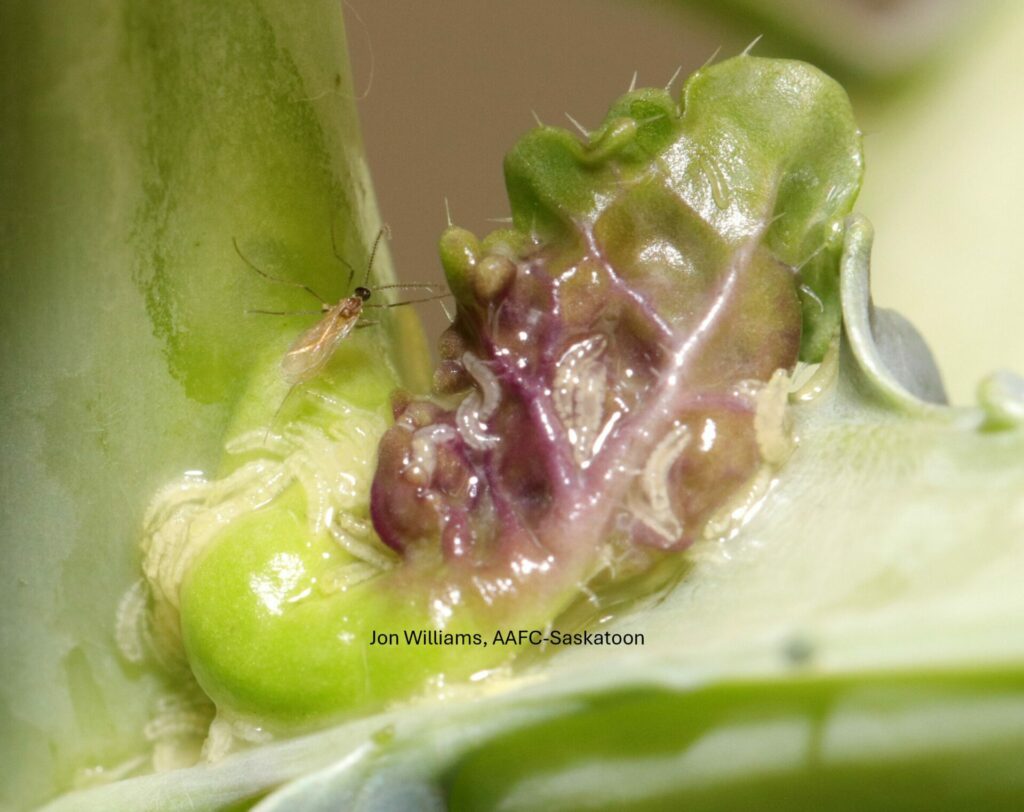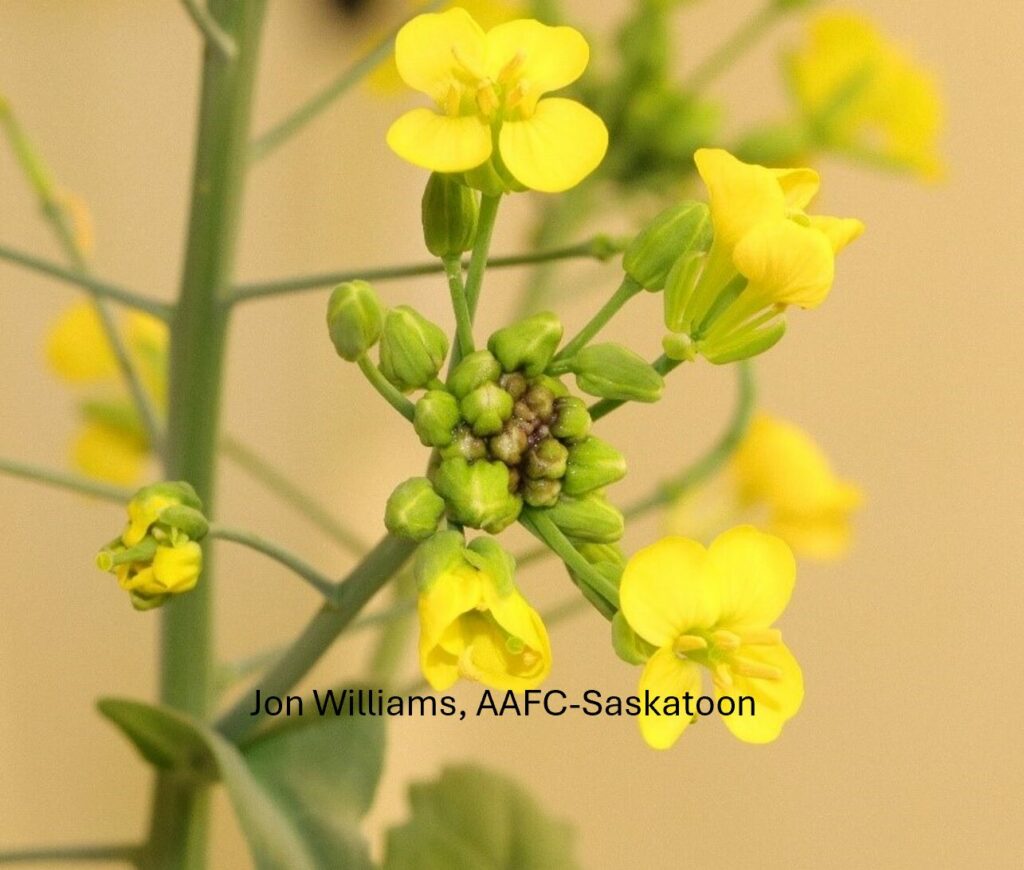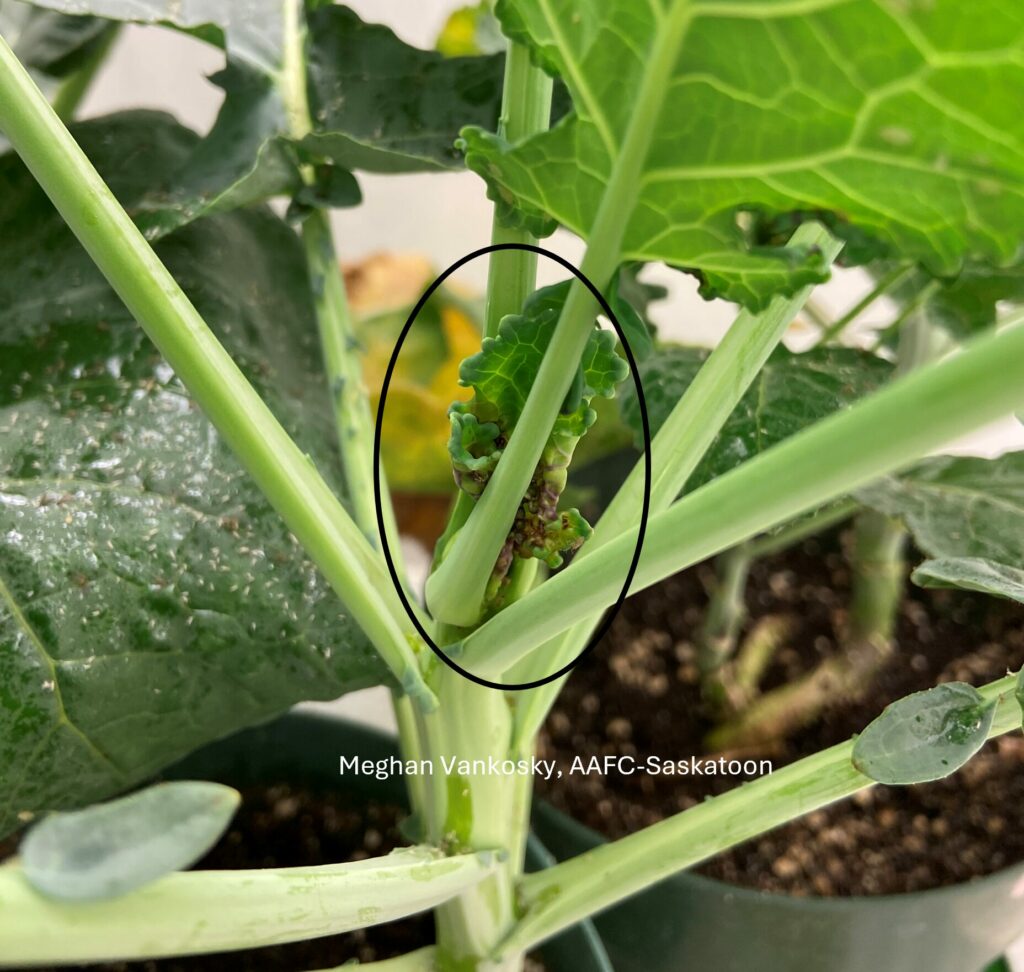Pieris rapae is known as the imported cabbageworm, the cabbage butterfly, and the cabbage white butterfly. Larvae are green and are covered in short, soft hairs, giving them a velvety appearance. The larvae are the damaging stage of the cabbage white butterfly life cycle. The larvae will eat the leaves and pods of canola and related field crops, but cabbage white butterflies are not considered to be an economic pest of canola.
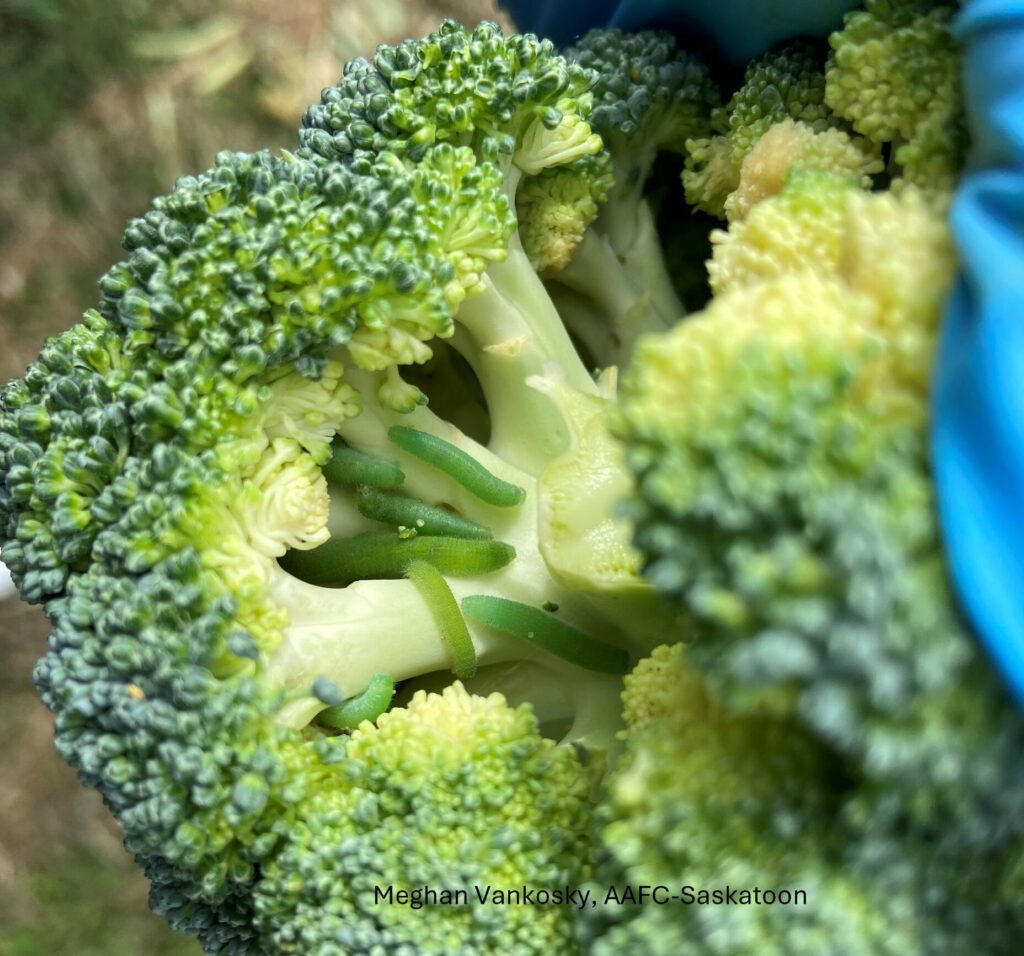
The larvae of cabbage white butterflies also consume the leaves of cruciferous weeds and vegetables, like broccoli, cabbage, and rutabaga. In vegetables, feeding damage to the leaves results in jagged holes.
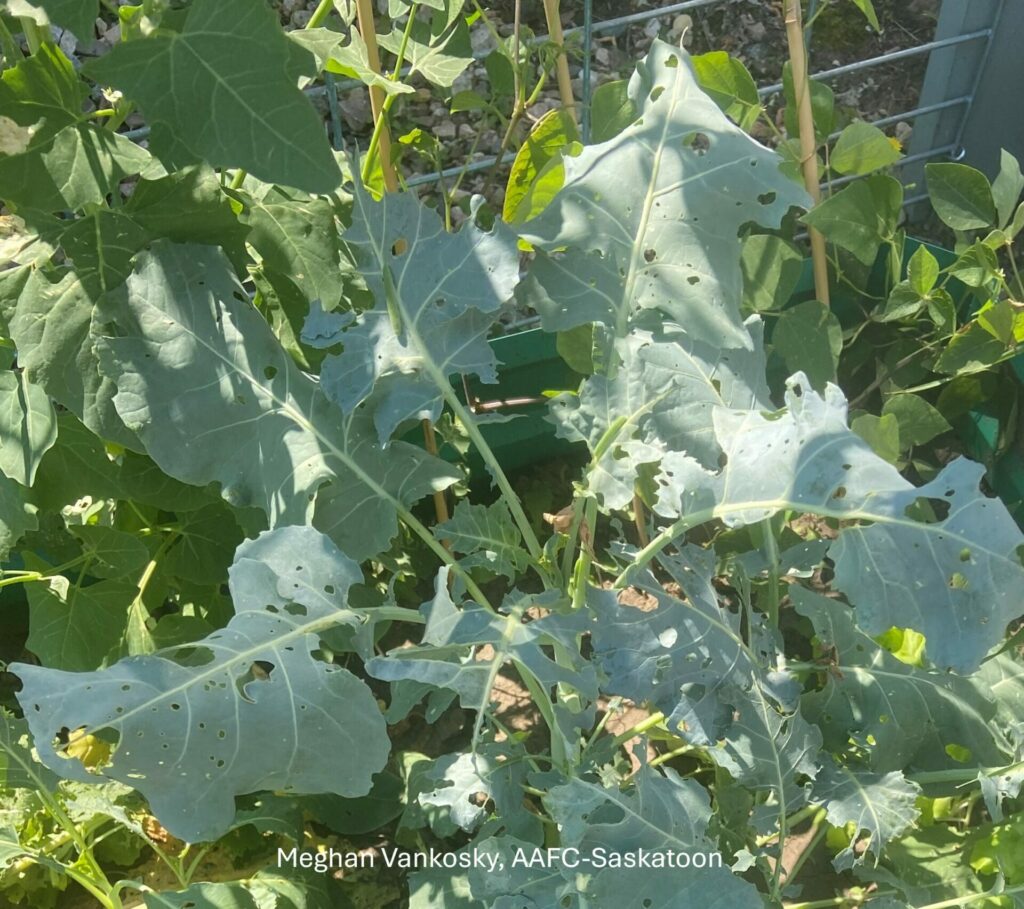
Larvae can also tunnel into the heads of vegetables, as pictured below. The combination of feeding damage to the heads and build-up of frass (fecal matter) can affect the marketability of vegetables infested with cabbage white butterfly larvae.
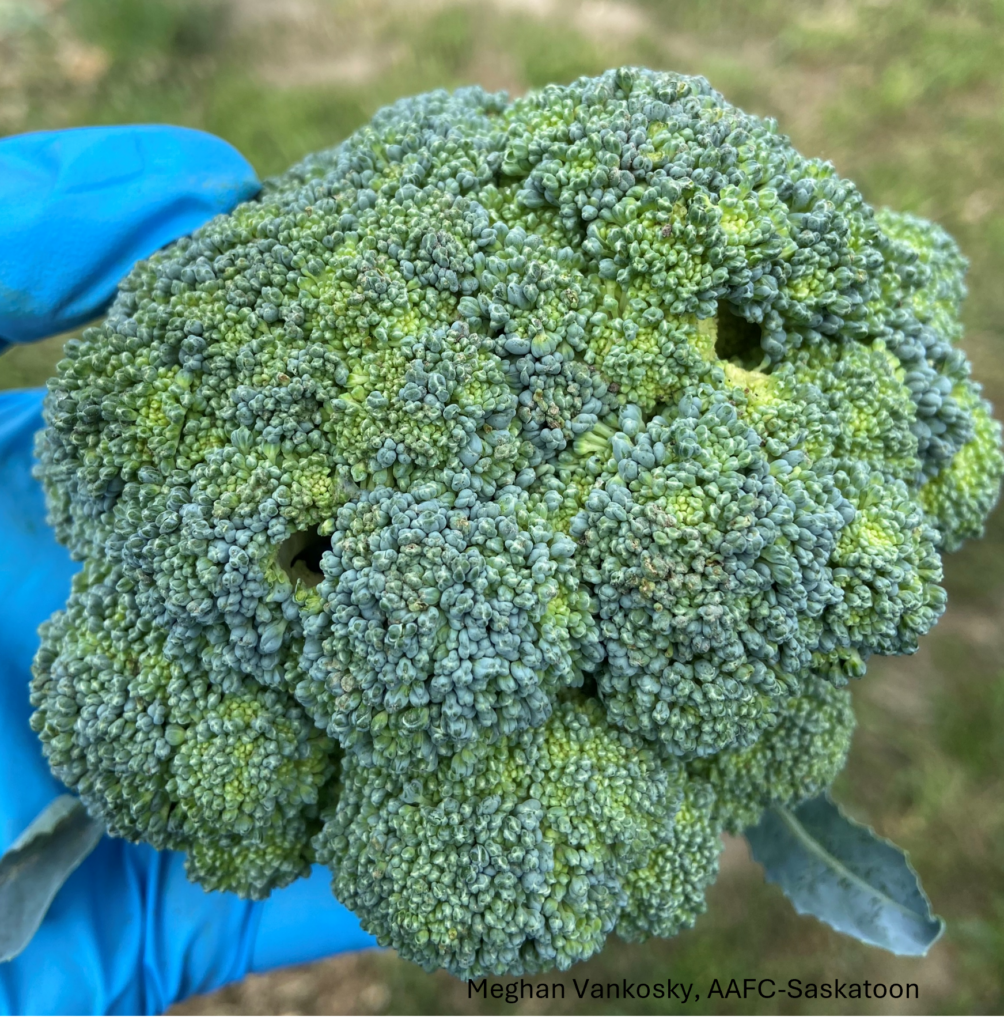
Adult cabbage white butterflies do not damage crops as they feed on nectar. The white butterflies have black-tipped forewings with black spots and are often seen flying around canola and mustard fields and around gardens where cruciferous vegetables are grown. In 2023, cabbage white butterflies were especially numerous in southeastern Saskatchewan in August.
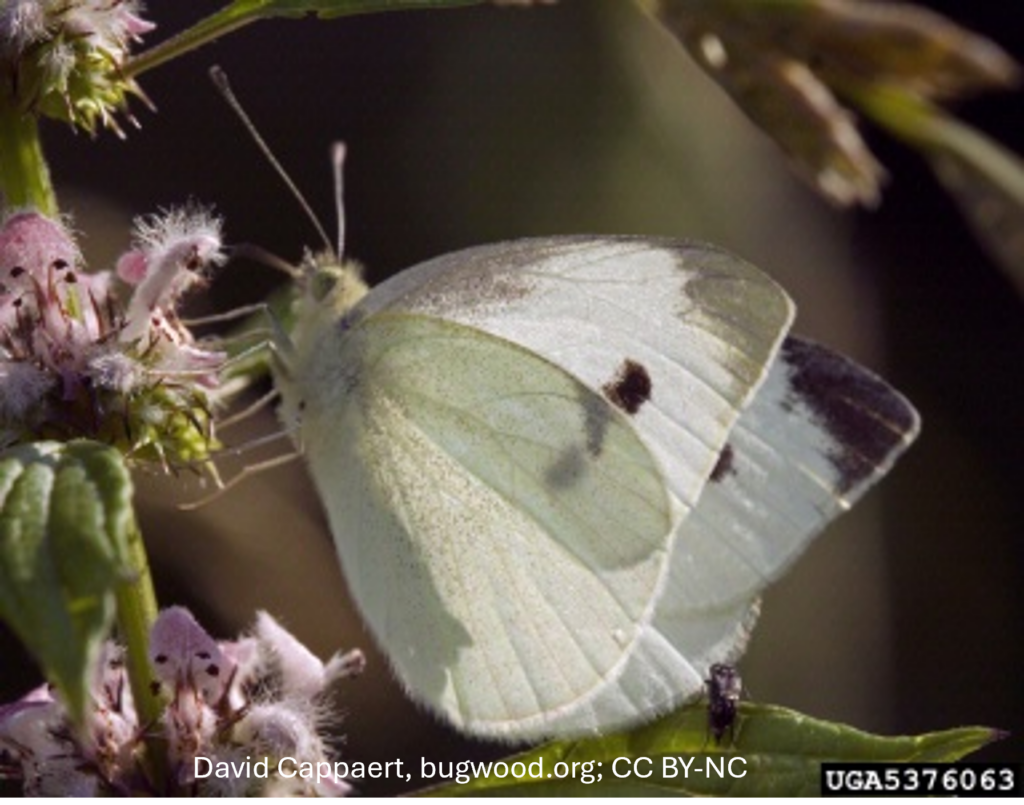
For more information, please read the Imported Cabbageworm page in Field Crop and Forage Pests and their Natural Enemies in Western Canada, also available in French, or check out the cabbageworm page in the Canola Council of Canada Canola Encyclopedia.

